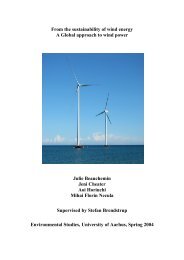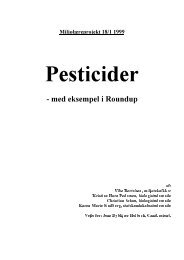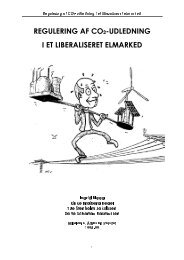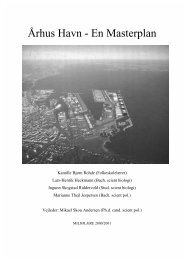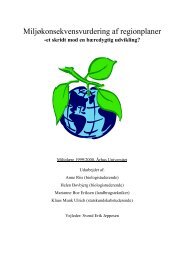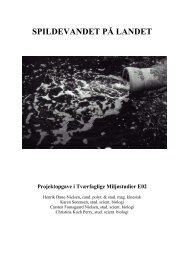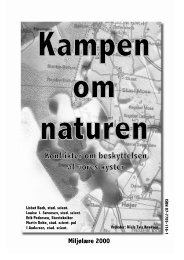University of Aarhus ECOTOURISM AS A WAY TO PROTECT ...
University of Aarhus ECOTOURISM AS A WAY TO PROTECT ...
University of Aarhus ECOTOURISM AS A WAY TO PROTECT ...
You also want an ePaper? Increase the reach of your titles
YUMPU automatically turns print PDFs into web optimized ePapers that Google loves.
Ecotourism as a sustainable way to protect nature<br />
• The little five: buffalo weaver, elephant shrew, leopard tortoise, ant lion and<br />
rhino beetle.<br />
• Birding big six: ground hornbill, kori bustard, lappet- faced vulture, martial<br />
eagle, pel’s fishing owl and saddle- bill stork.<br />
• Five trees: baobab, fever tree, knob thorn, marula, mopane.<br />
• Five natural/cultural features: letaba elephant museum, jock <strong>of</strong> the bushveld<br />
route, masereni ruins, Stevenson Hamilton Memorial Library, thulamela.<br />
3.2.3. Tourists and their expectations<br />
In Obua J. and D. M. Harding´s research (1996), an investigation was<br />
carried out to find out what tourists expect from a visit in the Uganda National<br />
Park. Tourists were asked why they chose this destination. Their answers were<br />
as follows in order <strong>of</strong> importance: “About three-quarters said they mainly visited<br />
the place to view the wildlife. Over one-half gave the forest and its diversity as<br />
the second major reason. Nearly 50 % gave the tropical setting as the third<br />
reason, and the similar proportion named the culture and the people as the fourth<br />
reason. The peace and quite were <strong>of</strong> less significance and were given as the fifth<br />
reason by more than half <strong>of</strong> the visitors”.<br />
In this same research they tried to figure out what kind <strong>of</strong> people these<br />
tourists where to be able to improve the management <strong>of</strong> the parks in the future.<br />
The better you understand tourists, the better you can manage a national park to<br />
<strong>of</strong>fer services. The results were that tourists did not belong to one specific<br />
pr<strong>of</strong>ile, tourists were found from every social class, education, etc. But it was<br />
exposed that a great quantity <strong>of</strong> them were mature people with a university<br />
degree and at considerable knowledge about the environment.<br />
63





